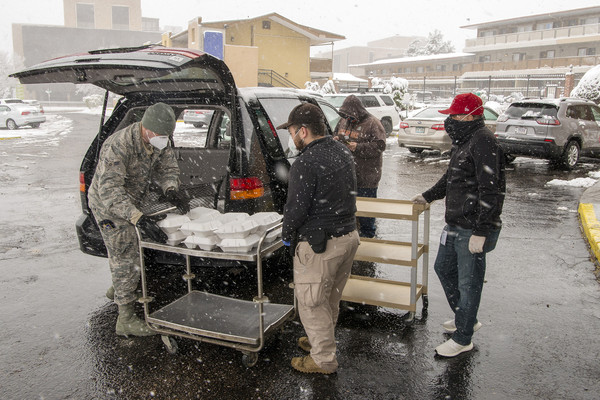
Pandemics and Natural Disasters: Managing Simultaneous Crises
The news alert on your phone says there’s a category 4 hurricane headed for your community. You have 48 hours to prepare your home to ride out the storm or evacuate. Due to the pandemic, you’ve been avoiding public spaces for the past three months. Now you face a difficult decision. Should you evacuate to a community shelter, putting yourself in a densely packed indoor public space? Or should you shelter-in-place and hope that the storm doesn’t destroy your home?
This isn’t a purely hypothetical situation; climate-induced disasters are already making it more difficult to respond to coronavirus. Historic rainfall in Midland, Michigan caused two dams to breach, causing thousands of residents to crowd community shelters in one of the states hit hardest by COVID-19.
Additionally, climate change is making both natural disasters and infectious disease outbreaks more likely. Warmer, wetter climates are ideal conditions for the growth of infectious diseases, hurricanes, and cyclones. Deforestation and ecological collapse are forcing humans into closer proximity with wild animals that may spread disease. Rising seas and severe droughts may displace billions of people in the coming century, exacerbating the spread of infectious diseases and crippling global health infrastructure.
Given this year’s hurricane season is fast approaching, it’s critical to examine what is necessary to mitigate and prepare for a natural disaster during a pandemic.
Thinking Long-Term
First, the most important long-term goal must be reducing carbon emissions. The U.S. is the world’s second-largest gross emitter of carbon and one of the largest emitters per capita. Reducing emissions could lead to less frequent and intense natural disasters than models currently project, saving countless lives in the long run.
Second, the U.S. must invest in climate-resilient infrastructure. As the Midland example illustrates, infrastructure plays a vital role. U.S. infrastructure received a D+ grade from the American Society of Civil Engineers in 2017. Keeping up with repairs on bridges, highways, dams, levees, and water distribution systems are critical to ensuring that infrastructure functions correctly during climate-related disasters. Additionally, decentralizing the U.S. electrical grid and upgrading it with better monitoring software are key aspects of climate resilience.
Third, the U.S. must update national flood maps and the National Flood Insurance Program. Allowing people to rebuild homes in areas vulnerable to climate-induced flooding puts them at risk. Rebuilding homes in lower-risk areas should be a priority for policymakers thinking about climate risk mitigation in the long-term.
Fourth, there needs to be a coordinated system to procure and distribute healthcare supplies in an emergency. This pandemic has revealed flaws in the current system. A better system involves a centralized buyer for emergency supplies, the federal government in the U.S. case, and a robust distribution system to make that aid available quickly.
Finally, smaller and/or rural health facilities need support. COVID-19 has pushed many to the breaking point due to unprecedented patient volumes and the loss of revenues from elective surgeries. Some have shut their doors – even as the communities they serve wrestle with COVID-19. Medical facilities like these are essentialin the aftermath of a disaster, and they need financial relief if they are to weather this pandemic.
Looking Ahead
Climate change means that climate-induced disasters will happen more often. Pandemics, like COVID-19, may also be more frequent due to a changing climate. Responding to climate-related disasters during a pandemic will be incredibly difficult. When thinking about the future, policymakers should make reducing carbon emissions a national priority, invest in climate-resilient and healthcare infrastructure, and update policies related to rebuilding in disaster areas.





